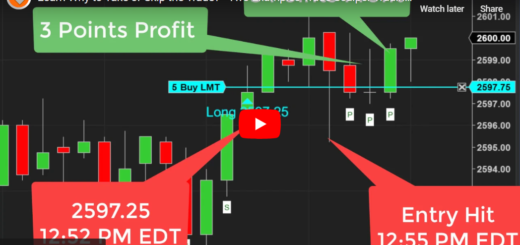Experience TradingView Mastery: How Trade Scalper Empowers Traders to Secure Wins!
Are you captivated by the high-speed realm of scalp trading? Today, we embark on an exploration of scalp trading using the Trade Scalper system on TradingView. From deciphering signals to adeptly managing trades, this blog post aims to furnish you with indispensable insights into this dynamic trading strategy.
Before we plunge into the specifics, it’s imperative to underscore the risks inherent in trading. Always bear in mind that trading entails inherent risks, and it’s imperative to only trade with funds you can afford to lose.
Understanding Entry Points
Let’s commence by dissecting entry points. When presented with a signal, such as 5244, the objective is to enter the market at that precise price or better, ideally within a tick. While market conditions may necessitate a slight deviation, the primary aim remains to capture the entry point as accurately as possible.
Setting Targets and Stops
Once engaged in a trade, the subsequent step is to delineate your targets and stops. A pivotal tool in this endeavor is the Average True Range (ATR). The ATR furnishes insights into market volatility, aiding in gauging potential price movements. Drawing upon the current ATR, you can ascertain suitable profit targets and stop-loss levels.
Implementing Time-Based Stops
In addition to price-based stops, it’s judicious to integrate time-based stops into your trading strategy. By stipulating a maximum duration for each trade, irrespective of whether it achieves its target, you mitigate the risk of protracted exposure to market fluctuations. This disciplined approach safeguards your capital and ensures timely decision-making.
Navigating Market Open
Trading during the market open presents distinctive challenges and opportunities. While volatility may be alluring, exercising caution during this period is paramount. Opting to wait for a few minutes post-market open enables you to gauge the initial market sentiment and make informed trading decisions.
Pre-Market Trading Considerations
For those delving into pre-market trading, assessing volatility levels is imperative. The ATR serves as a dependable metric for evaluating pre-market conditions, guiding your decision to participate in trading activities before regular market hours.
Adapting to Different Markets
While our focus primarily centers on the E-mini S&P, it’s noteworthy that the Trade Scalper system is adaptable to various markets, encompassing currencies and commodities. The fundamental principles of price action remain consistent across diverse assets, affording traders flexibility.
Verifying Signal Integrity
Addressing a prevalent query, it’s crucial to clarify that the Trade Scalper system does not repaint or recalculate signals once generated. This transparency ensures that traders can place trust in the integrity of the signals, fostering confident decision-making.
Conclusion
Scalp trading utilizing the Trade Scalper system necessitates precision, discipline, and adaptability. By mastering entry points, establishing effective targets and stops, and integrating time-based stops, traders can adeptly navigate the intricacies of short-term trading with assurance.
Remember, successful trading entails perpetual learning and adjustment. Whether you’re a seasoned trader or a novice, refining your skills and staying abreast of developments are pivotal to long-term success.
For further inquiries or to explore the Trade Scalper system, visit daytradetowin.com. Happy trading!




